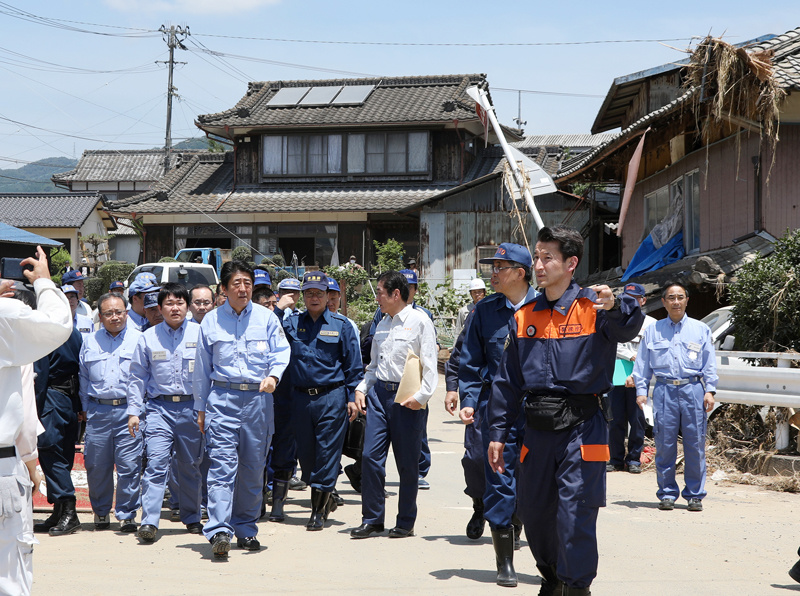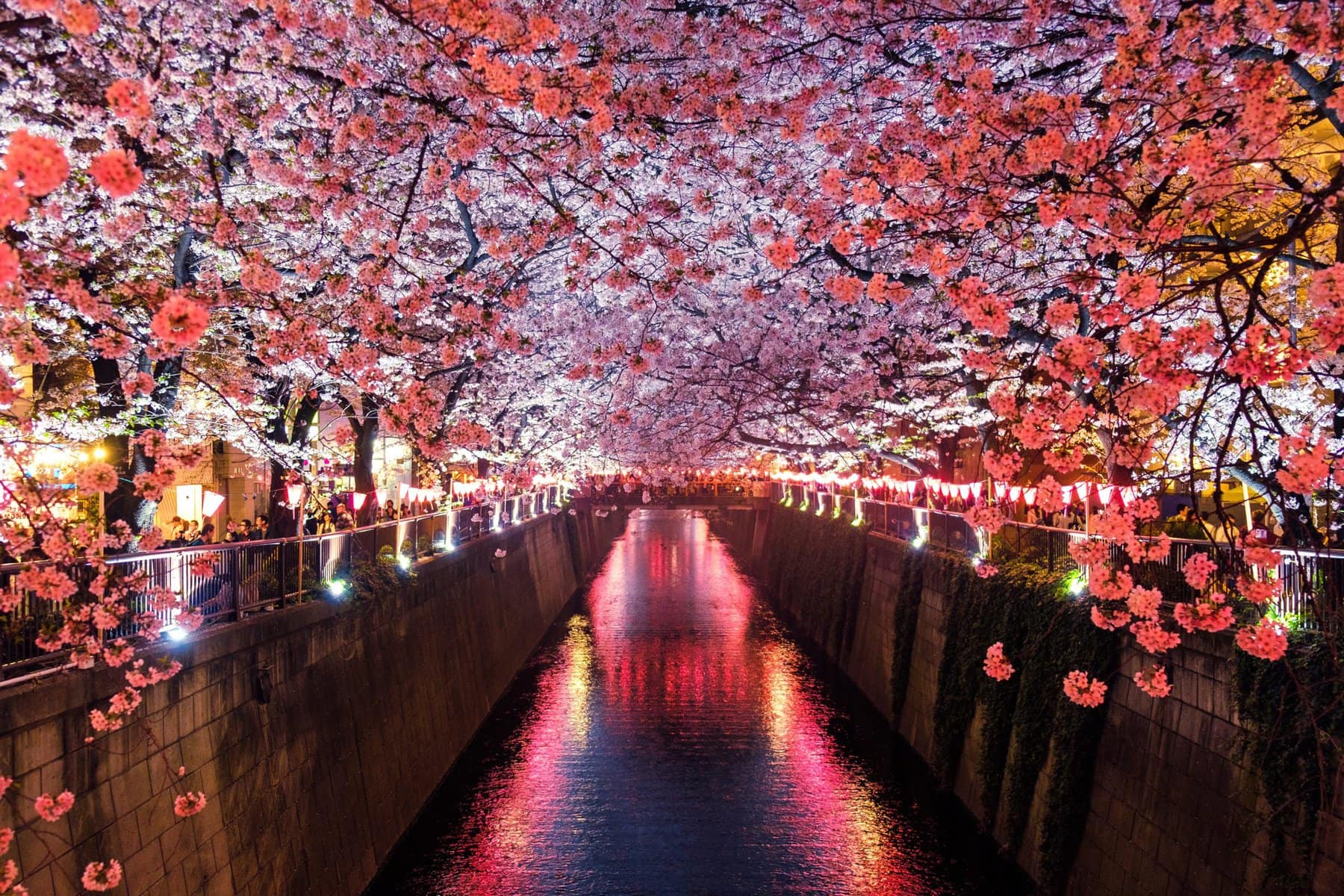From the invaluable perspectives of two people removed from the situation, it seemed best to navigate back to Higashihiroshima. I knew I could get there because I’d already rolled through the main drag at least four times, from nearly every direction. There I could find a train station that was rumored to resume some lines at 3 p.m. My best-case scenario now was to catch a train back to Iwakuni and leave our car in the metered lot. And, while my husband assumed that my plan was to return for it in the next day or so, I honestly couldn’t have cared less what happened to that car. If I never saw it again, we weren’t out any more than the $2,100 we paid for it. I wanted to get out of that place.
We parked in the lot and left everything except my purse in the car. Again, I hurried the kids along, the urgency never left my body. It still amazes me how little we traveled in that time for as rushed as we were.
The scene inside the Higashihiroshima train station was what I can only describe as a refugee camp, though I’ve never experienced one myself. Not unlike the airport, the floor was littered with unfiltered, frustrated travelers. They sat on the floor which was covered with blue tarps, and I remember thinking it looked like a picnic I would beg never to be invited to.
We stepped over legs and blankets for the second time that day and stood in line at the ticket window. Given the number of people in the station (easily over 100) versus the number of people in line (six, including the three of us), the odds seemed grim, and I could feel the eyes of every soul awake in that lobby beating into the back of my head. No doubt there were thoughts of the dumb Americans standing in line, don’t they know there is a disaster happening? Sensing the exchange in front of me was wrapping up, I frantically typed an easily translated phrase into Google Translate: “Can I get to Iwakuni today?”
When it was our turn, I squeaked out a desperate, “Kudasai,” and showed the attendant the kanji on my phone. I’ll never really know if the look she gave me was one of empathy or one that represented what I expected the majority of the room to be thinking, “Oh, sweetheart, not going to happen.” She told me in more English than I expected that the local trains “not running.” Grasping at any chance for success in this encounter — desperate to show my husband I can navigate the Japan rail system on my own — I said, “We can take the Shin” (the bullet train).
At this, she simply gave me another ambiguous smile and said, “I don’t know.”
I was cut off by the man behind me trying to ask a question, but I didn’t move. Where did I have to go, really? I asked again. “Will the trains start at 3:00?”
She simply answered, “I don’t know,” for the second time. In my year of living in Japan, I know that in any customer service situation, you will never be told no. It’s not like the states where someone is bound to eventually tell you to get lost if you prod too much. The Japanese do not say no in situations like this because they don’t want to disappoint. Instead, they stall with come back later, I don’t know, or maybe. It was hard to accept, but her “I don’t know,” was a no.
We left, and were only briefly encouraged that we weren’t even in the paid parking lot long enough to be charged.
I decided to get back to the airport. Maybe I was hoping they would have more information. Maybe I was hoping I could just fly to Iwakuni, even if that was by way of Tokyo where we had just come from (Hiroshima doesn’t fly directly to Iwakuni). Maybe I was just shooting for the airport because I knew I could get there.
But I couldn’t. I tried for half an hour and couldn’t find my way back. The route we’d taken was so twisted, that I couldn’t get there again. My friend back in Iwakuni brainstormed with a clear head; she suggested a hotel in Higashihirosima. I knew where these hotels were — across the street from the train station I’d just left. I knew this had gone on long enough. Defeated, after being unable to get us to the comfort of home, I decided it was time to check into a hotel for the night.
I tried the Vessel Hotel first — no vacancy. I asked, unsure if I’d even be understood, if the clerk knew if any of the neighboring hotels had vacancies. She pointed me down the road to the Tokyo Inn.
Ignoring the posted signage that parking in the Vessel Hotel parking lot was for guests only, we left the car there and quickly walked down the sidewalk and across a crosswalk, passing people with luggage headed in the opposite direction, no doubt doing the same thing we were doing. The lobby of the Tokyo Inn was full. Again, the clerk told me no vacancy.
All the hotels were full — every single one. The lobby of the train station was full.
The airlines had flown all of these people here and we were all stuck, surrounded by rising water.
Returning, again defeated, much like the walk back to the car that happened across the street in the train station parking lot, I called my husband. This was the setting of my second and last cry of the day. I knew as I spoke to him that it sounded like I was giving up. My voice broke as I told him, “The hotels are full. We’re stuck. I don’t know what to do. Tell me what to do.”
…silence…
After a lot of sighing and sobbing on both ends of the phone, he asked me if I could get to Kure. I’d already tried, but I could try another route…maybe. I would start driving, and he would find me a vacant hotel. It was a good plan. It was our only plan. I told him to text me with a hotel pin when he found it, but not to make a reservation, since I was unsure if I could reach Kure — whether for road conditions or gas. I would pull off and look for his text when I could stop.
For the third — or was it the fifth — time that day, we drove by Big House (which I find ironic, as it’s a slang term for prison), and a few other obnoxious roadside reference points that I was sick of knowing. I plugged in a hospital in Kure so the GPS would take us there — I couldn’t drive and map the route at the same time. Eyes off the road for a minute would end the struggle right then and there, whether disappearing into one of the gaping holes where the road once was, or mudslide, or tree limb, or pedestrian working to clear the road with shovels and brooms.

I didn’t see my husband’s text informing me that all the hotels in Kure were full until I hit the roadblock that was surely farthest down the road we’d gotten (it wasn’t, in fact), turned around, and pulled into the first gas station I came to. Not only would I need gas to eventually get somewhere, but there was a very real possibility the gas would run out in the town, not just in my little tank.

Photo Credits: Associated Press | Unsplash










































